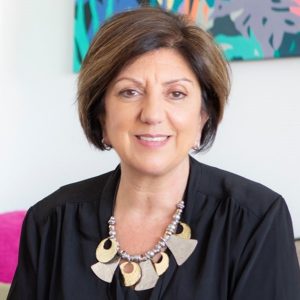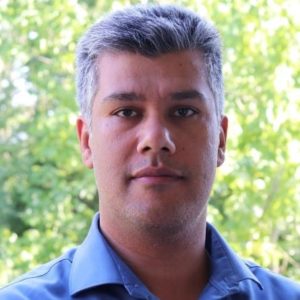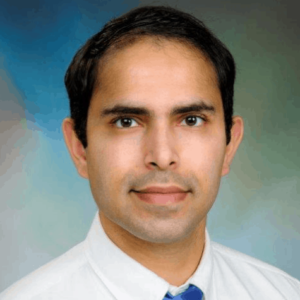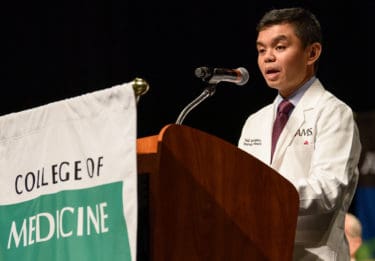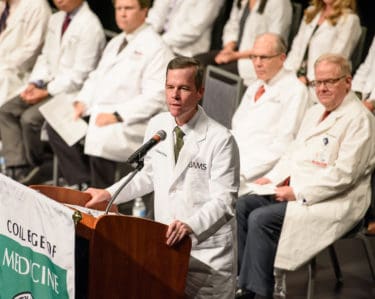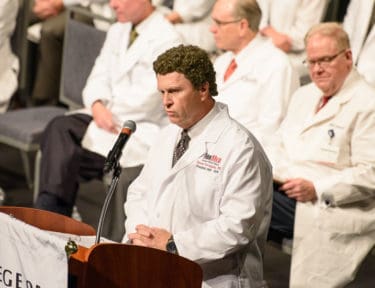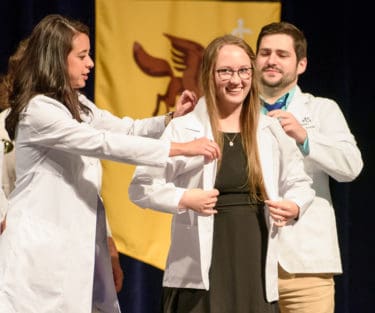Sept. 4, 2019 | Erika Petersen, M.D., a neurosurgeon and researcher at the University of Arkansas for Medical Sciences (UAMS), has been named the lead investigator for a major national clinical trial exploring a unique treatment for a painful chronic diabetic foot condition.
The trial will test whether high frequency spinal cord stimulation is an effective treatment for painful diabetic neuropathy, a type of nerve damage caused by diabetes that results in severe pain and numbness in the hands and feet. About 4 million diabetic patients have painful diabetic neuropathy in the U.S. Spinal cord stimulation is a technique for treating pain that involves surgically implanting a device epidurally. Thin wires carry electrical current from the device to the spinal cord, providing therapeutic stimulation to the nerves in the area where the pain is felt.
The company sponsoring the trial, Nevro Corp., has been investigating whether the Senza® SCS system could also be effective for treating painful diabetic neuropathy. Nevro is a global medical device company focused on providing innovative products that improve the quality of life of patients suffering from debilitating chronic pain.
Petersen, an associate professor in the Department of Neurosurgery in the UAMS College of Medicine, has led the UAMS portion the research.
“Dr. Petersen’s performance in the study has been exemplary,” said David Caraway, M.D., Ph.D., chief medical officer of Nevro Corp. “Dr. Petersen has demonstrated tremendous leadership of her team through robust study recruitment, careful patient selection, and efficient movement of subjects through the protocol. As the lead principal investigator, Dr. Petersen will be the first author of the primary endpoint analysis report and will represent the investigators at many conference presentations of the study data.”
The company also applauded the contributions of UAMS sub-investigators Heejung Choi, M.D., Chris Paul, M.D., and Johnathan Goree, M.D., of the Department of Anesthesiology; neuropsychological assessments by Jennifer Kleiner, Ph.D., and Jennifer Gess, Ph.D., of the Department of Psychiatry; and research support services provided by the Translational Research Institute.
About a quarter of Americans with diabetes have painful diabetic neuropathy, according to published data. In Arkansas, where an estimated 363,000 people have type 2 diabetes, about 73,000 of those (20%) would be expected to have painful diabetic neuropathy. The number could be higher — a study conducted in five rural Arkansas counties concluded that painful diabetic neuropathy was alarmingly underdiagnosed.

